We just moved barns this past weekend and I don’t think there are any boxes unchecked. It’s private, well maintained, most of the horses there are the owners, 200 acres with a few miles of trails, space to drive, indoor and outdoor riding arenas. The barn owner and their adult daughter both live on the property as well the main caretaker of the horses/property. The caretaker is on top of everything, has a lot of experience (track and other barns), and is a total work horse himself. All people are very nice, communicative, and are on the same page about horse care as I am.
As far as turnout goes…again, ideal. Multiple acres large, well maintained pastures with run in sheds, and 3 smaller dry lot areas. The horses are pretty much out 24/7. They come in in the morning for breakfast for a couple hours, go back out again for the day, come in for a couple hours for dinner, then go back out for the night. With the exception of truly inclement weather like thunderstorms, the horses go out.
Right now my fjord is out with two other new friends on a dry lot with ample hay in small hole hay nets. Once we get our first freeze, the plan is to wait a week for the grass to be done for the season, and then put him out with the friends we moved with in the big pasture with a run in shed off our barn.
This is the first barn that has the combo of awesome turnout and an indoor arena. Initially I was thinking to let him grow out his wonderful fluffy winter coat which is coming in full force. Upon further thought, I realize I will often have a soggy horse to bring in that I want to ride. If I put a sheet on him, he needs to be clipped in some capacity otherwise he will overheat with his full winter coat.
Looking at this:
Last year I gave him a blanket clip, mostly due to the fact that we had a warm November and he was getting way too hot with his winter coat. He had a no fill rain sheet for the entirety of the winter once it started getting wet and colder (low 40’s). Im inclined to let him be out day and night in the winter since there is a shelter unless the weather is totally miserable.
I think in this environment, I’m leaning towards towards the trace clip so he has his neck protected. The sheet I have for him goes up the neck a bit, but I want him to have hair to puff up.
I don’t mind him burning extra calories with the cold…he could stand to lose a few pounds but is in other good shape. Here’s our average temp/precipitation info:
What would you do? We will be in work all winter both in the indoor and trail riding. Last year was the first year I clipped/blanketed in my 30+ years of horses so I don’t have a lot of experience.


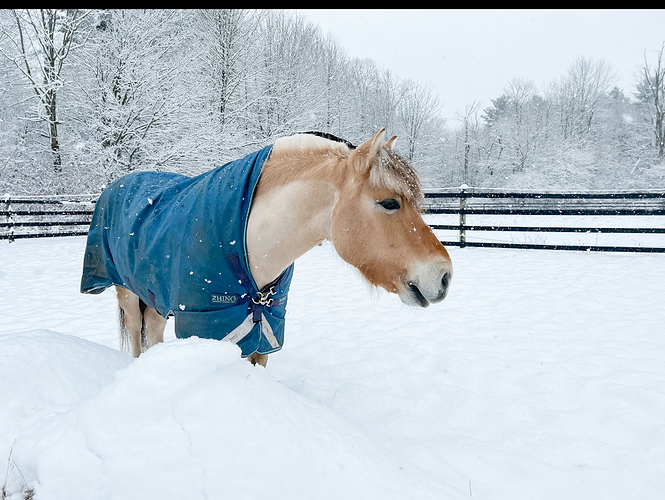
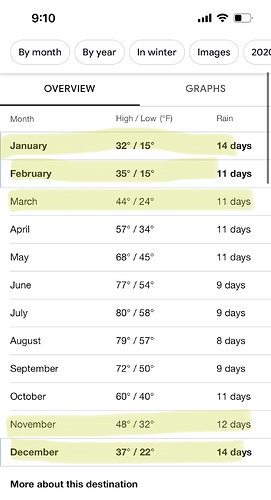
 that way you can figure out what works for cooling off/reblanketing and your schedule, and do that next clip accordingly for when it’s actually cold
that way you can figure out what works for cooling off/reblanketing and your schedule, and do that next clip accordingly for when it’s actually cold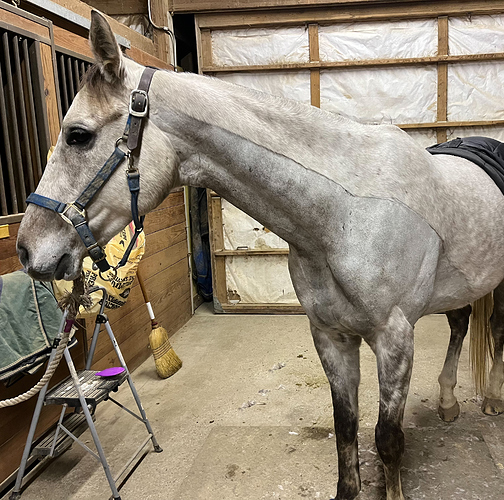
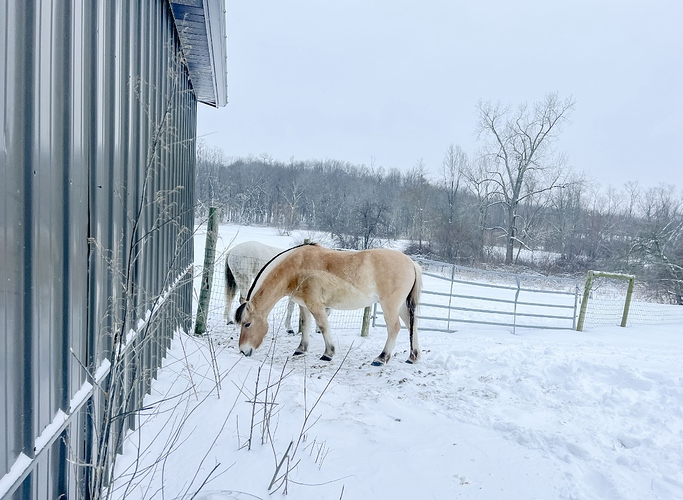
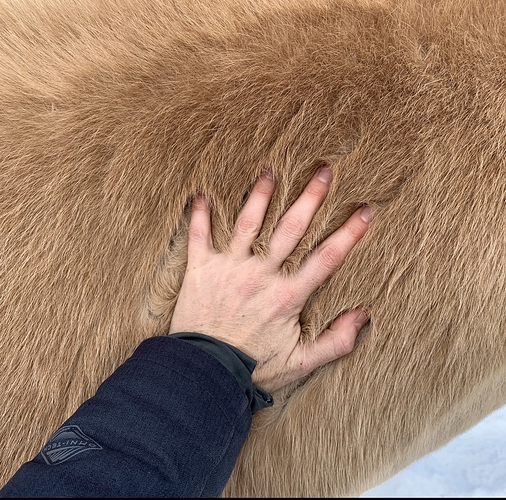
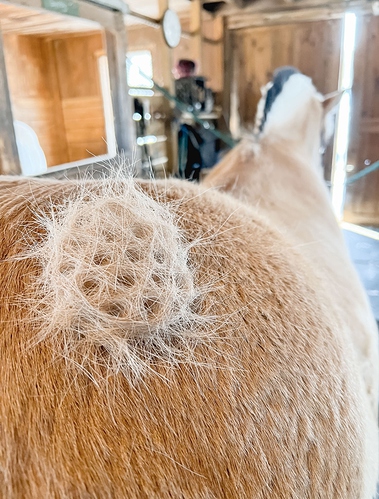
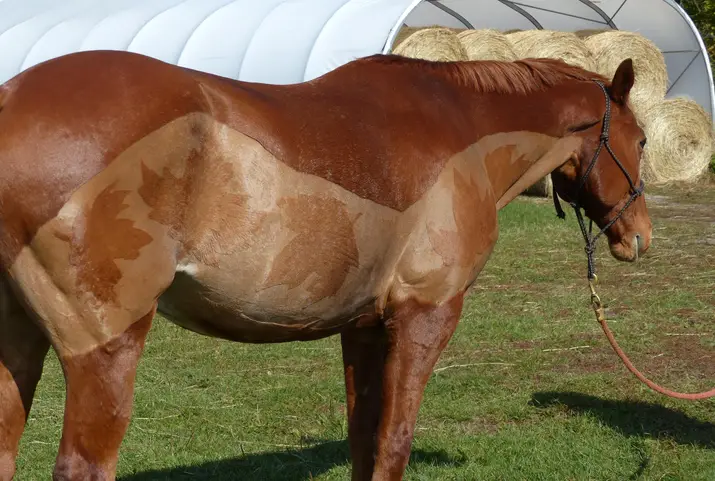
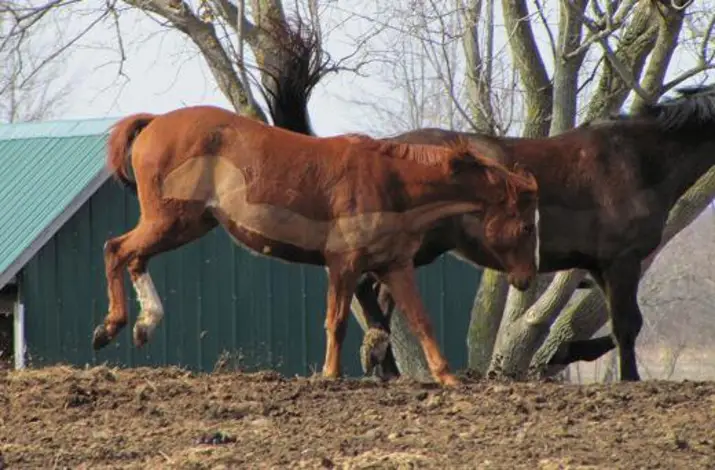
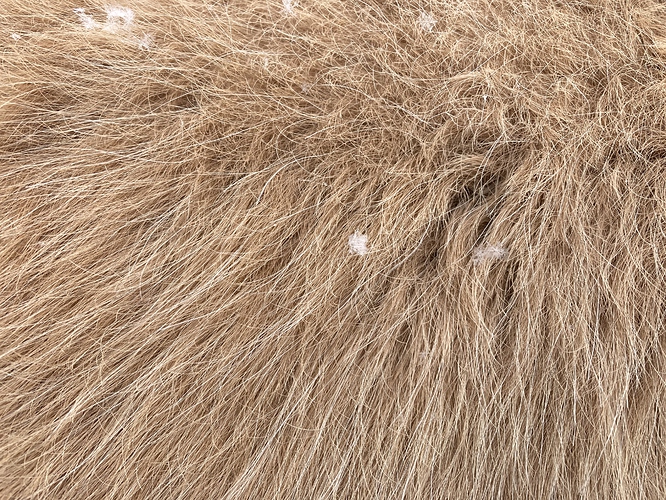

 Yes. Yes, I did clip leaves into my horse’s coat. I drew the leaves on with a whiteboard marker, clipped! around them, and then used an 1/8" length guard and clipped the leaves short.
Yes. Yes, I did clip leaves into my horse’s coat. I drew the leaves on with a whiteboard marker, clipped! around them, and then used an 1/8" length guard and clipped the leaves short.